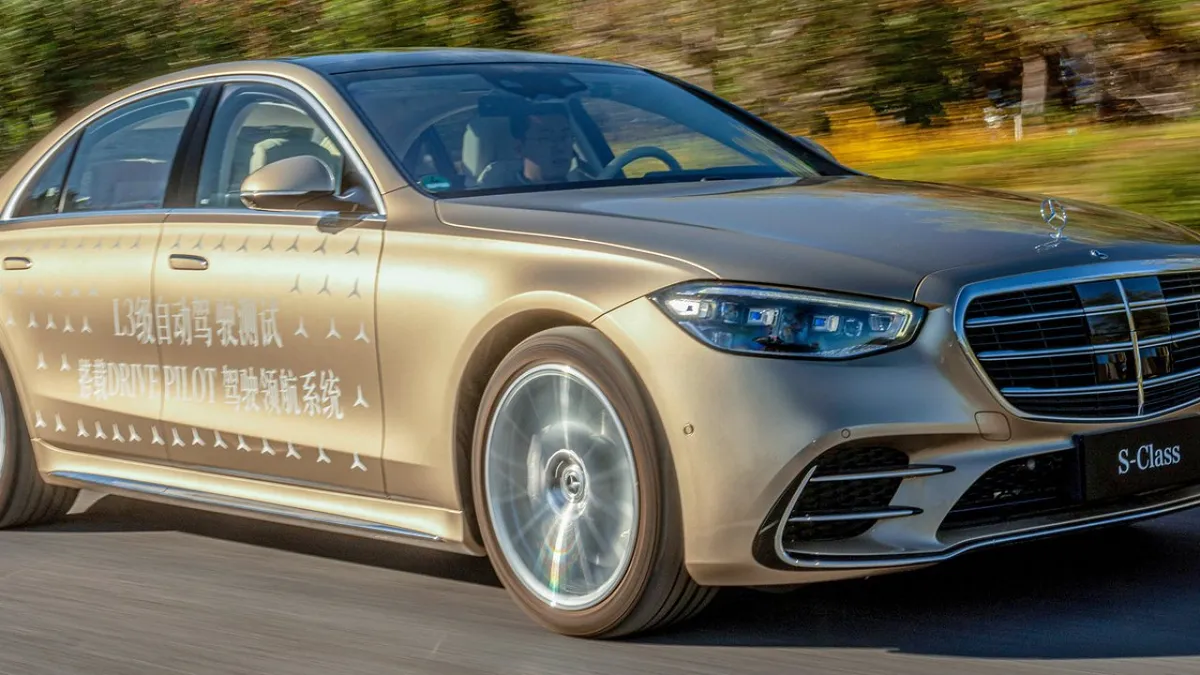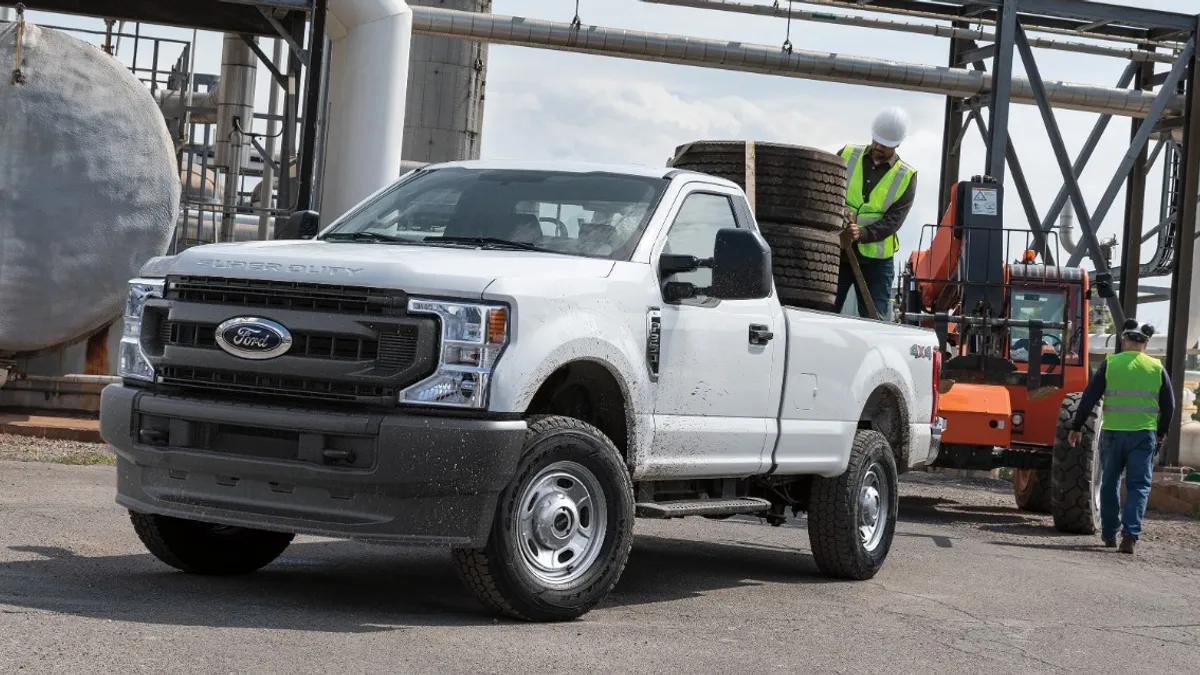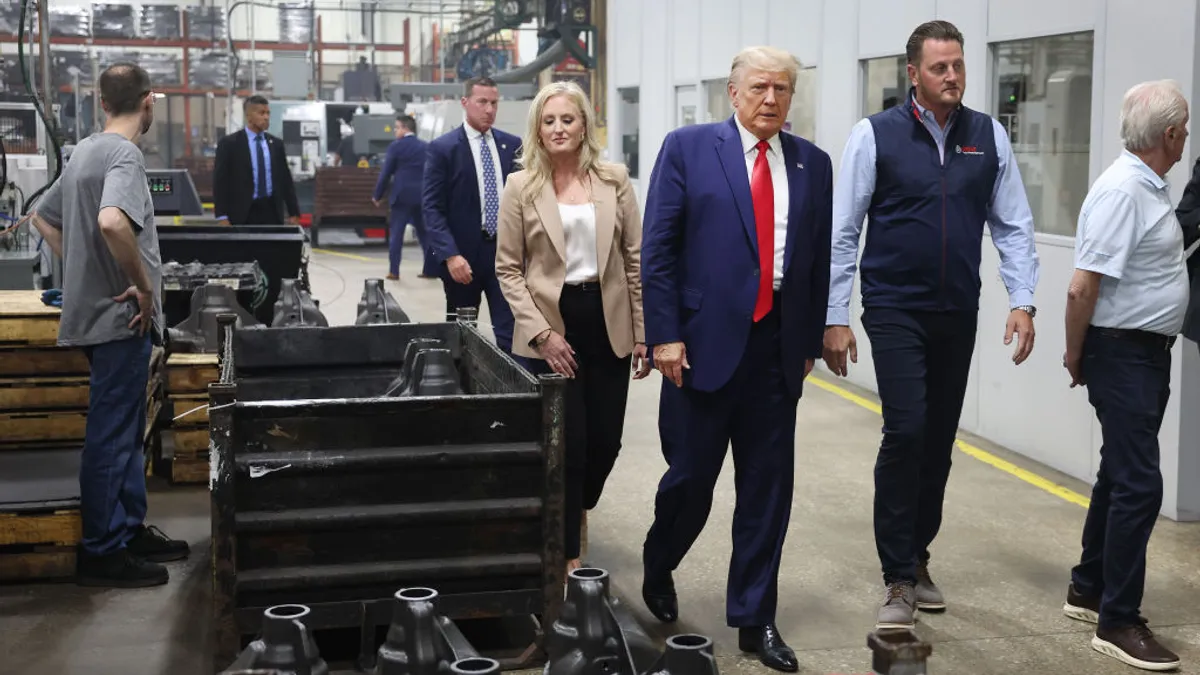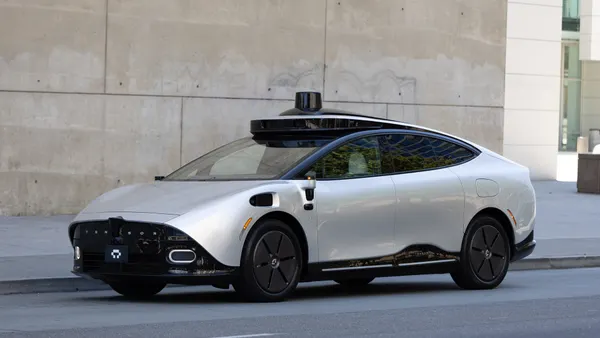Dive Brief:
- Mercedes-Benz will begin testing its Drive Pilot Level 3 autonomous driving system on public highways in China after obtaining a license from regulators, the automaker said Monday.
- The automaker plans to continue working with local authorities, including engineers, lawyers and data protection experts, to tailor its Level 3 autonomous driving feature for roads in China to ensure a high level of safety.
- The on-road testing permit paves the way for Mercedes-Benz to offer its highly automated Drive Pilot feature to its customers in the world's biggest auto market.
Dive Insight:
Drive Pilot has already been approved for some roads in Germany, and in the U.S. in Nevada and California. Mercedes Benz currently offers Drive Pilot on its flagship S-Class and EQS electric sedan.
The feature is the world’s first SAE Level 3 automated driving system and can handle all driving tasks without human supervision under certain conditions. Drivers can safely check email or watch a movie at speeds under 40 mph, but they still need to be ready to take over driving tasks if prompted, according to Mercedes-Benz.
When Drive Pilot is active, drivers can also open and use apps via the vehicle’s infotainment screen, which are otherwise blocked when the car is in motion.
For now, Drive Pilot is limited to speeds under 40 mph, but in the future, Mercedes Benz says it could eventually operate at speeds up to about 80 mph. Drive Pilot can also handle unexpected traffic situations and apply the vehicle’s brakes if needed.
All Mercedes-Benz vehicles equipped with Drive Pilot have additional sensors installed that the automaker considers “essential for safe conditionally automated driving.” The sensor suite includes lidar, an advanced stereo camera mounted on the windshield, a multi-purpose camera in the rear window and microphones. The cameras and microphones can detect blue lights and other special signals from emergency vehicles, according to Mercedes-Benz. Drive Pilot uses a rain sensor in the wheel well to monitor for wet road conditions, which it’s currently not designed to operate in.
All Drive Pilot vehicles are also equipped with fully redundant steering and braking systems, as well as a redundant onboard electrical system, to ensure the automated driving features are not disabled if any part of the system fails. The redundancy of critical vehicle systems also ensures a safe handover to the driver, if needed.
"After bringing our Drive Pilot to Germany and the U.S., the testing license in Beijing is the next important milestone to get conditionally automated driving ready for Chinese roads,” Markus Schäfer, a Mercedes-Benz board member and CTO of development and procurement, said in a statement. “We will incorporate all our global expertise to support the local R&D team for a safe and reliable system design.”
Mercedes-Benz says it will continue to improve the capabilities of Drive Pilot. The next update will be for it to operate at speed up to 90 km/h (56 mph) when following another vehicle on the highways.
Mercedes-Benz partnered with NVIDIA and lidar company Luminar on the vehicle hardware to support Drive Pilot.














